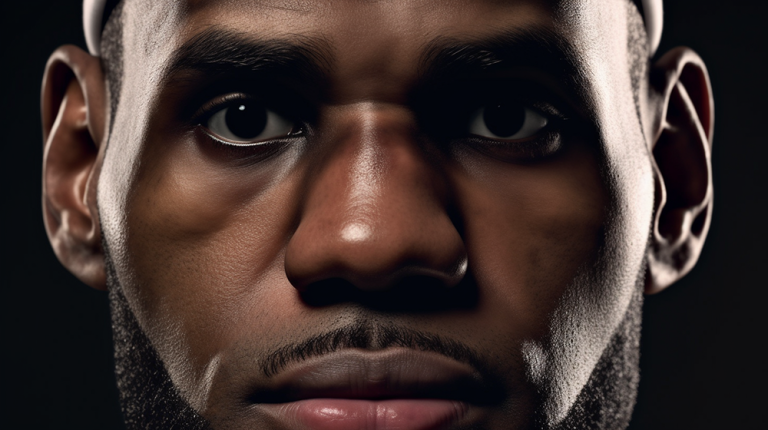 Hyrule Historia was originally released in Japan in 2011 to celebrate the 25th Anniversary of The Legend of Zelda franchise. Part artbook and part encyclopedia, Hyrule Historia provided Zelda fans with a wealth of new information and never-before-seen artwork spanning the last twenty-five years.
Hyrule Historia was originally released in Japan in 2011 to celebrate the 25th Anniversary of The Legend of Zelda franchise. Part artbook and part encyclopedia, Hyrule Historia provided Zelda fans with a wealth of new information and never-before-seen artwork spanning the last twenty-five years.
Last week Dark Horse Comics released its translated version of the book in North America, Australia, and parts of Europe.
The book is divided into four sections. The first section is exclusively dedicated to Skyward Sword. The second section establishes the official chronology of all the games, while the third section consists of production and concept art from each of the games in the series. The fourth section is a 32-page Zelda manga.
 The first section of the book is essentially an in-depth guide to the world of Skyward Sword. You get character bios, production and concept art, maps and location descriptions, as well as quotes from various developers who worked on the game. This section also points out some interesting connections between Skyward Sword and other games in the series that you might not have made on your own.
The first section of the book is essentially an in-depth guide to the world of Skyward Sword. You get character bios, production and concept art, maps and location descriptions, as well as quotes from various developers who worked on the game. This section also points out some interesting connections between Skyward Sword and other games in the series that you might not have made on your own.
In one instance, the book points out that the harp in Skyward Sword looks similar to Skeik’s in Ocarina of Time and asks if it could be the same one. In another, it points out that the Timeshift stones are the same color of Link’s ocarina and asks if they might be made of the same material.
A lot of other reviews have not been very happy with the large amount of pages dedicated to Skyward Sword. While it’s not my favorite Zelda game, I really didn’t mind all the attention it got. Keep in mind that the release of the book in Japan coincided with the release of Skyward Sword, so it shouldn’t be surprising that it got special attention.
Besides that, Skyward Sword is the origin story of the whole series so perhaps it deserves the extra pages. It does a decent job of connecting the game to the other games, so even if you’re not a huge Skyward Sword fan, this section still has something to keep you interested.
 One of the big questions for Zelda fans has always been how and if all the games fit together. Now we have a definite answer. Kind of. The second section of the book is devoted to establishing the chronology of all the games. The book gives a straightforward chronology until Ocarina of Time, at which point it branches off into three separate realities. After giving us the chronology chart, the book provides a summary and analysis of each of the games. Pictures, maps, item descriptions, and other information blurbs are spread throughout.
One of the big questions for Zelda fans has always been how and if all the games fit together. Now we have a definite answer. Kind of. The second section of the book is devoted to establishing the chronology of all the games. The book gives a straightforward chronology until Ocarina of Time, at which point it branches off into three separate realities. After giving us the chronology chart, the book provides a summary and analysis of each of the games. Pictures, maps, item descriptions, and other information blurbs are spread throughout.
The start of this section prefaces everything by saying that this chronology might not be wholly accurate. The book states that, “This chronicle merely collects information that is believed to be true at this time, and there are many obscured and unanswered secrets that still lie within the tale.” It’s basically saying that the chronology is accurate in a broad sense, but every single detail isn’t necessarily wholly accurate. This leaves room for past or future inconsistencies with the chronology given. If you wanted an exact canon chronology you may be a little disappointed. Fans have been demanding Miyamoto to throw them a bone regarding the chronology for years. For what it’s worth, the bone he did throw was bigger than I expected and quite satisfying.
 The third section provides storyboards, production and concept art, sketches and all other kind of visual goodies for each of the games of the series. Characters, enemies, items, and locations are all covered here. Imagine each game in the series given a small version of the treatment Skyward Sword got in the first section. All of the visuals are accompanied by some kind of description or information blurb. Some of these blurbs give background on the visual itself, while most of them refer to the particular object/person it’s describing. As you’d expect, the amount of attention paid to some games dwarves the attention paid to others.
The third section provides storyboards, production and concept art, sketches and all other kind of visual goodies for each of the games of the series. Characters, enemies, items, and locations are all covered here. Imagine each game in the series given a small version of the treatment Skyward Sword got in the first section. All of the visuals are accompanied by some kind of description or information blurb. Some of these blurbs give background on the visual itself, while most of them refer to the particular object/person it’s describing. As you’d expect, the amount of attention paid to some games dwarves the attention paid to others.
This section also includes the evolution of the character designs for Link, Zelda, and Ganon. It ends with a catalog of all the Zelda games. Like the two sections before it, this section provides the reader with jaw-dropping visuals and copious amounts of information on the series.
 The last section of the book is a 32-page manga by the artistic duo known as Akira Himekawa who have been doing the Zelda manga since 1999. The first eight pages are in full-color and the rest are in black and white. As they do with all of their manga, Dark Horse presented this one in the Japanese-style right-to-left format. The story itself is a prequel to Skyward Sword and is described as the “very first Zelda story.”
The last section of the book is a 32-page manga by the artistic duo known as Akira Himekawa who have been doing the Zelda manga since 1999. The first eight pages are in full-color and the rest are in black and white. As they do with all of their manga, Dark Horse presented this one in the Japanese-style right-to-left format. The story itself is a prequel to Skyward Sword and is described as the “very first Zelda story.”
The artwork is impressive and the color pages are especially easy on the eyes. The story itself is short and sweet, but don’t expect any real new insight into the series. While it would have been nice for the whole things to be in color, the manga should be looked at as a nice little extra to a book that’s already jam-packed with content.
 I can’t review Hyrule Historia without talking about the price. The last hardcover novel I bought retailed for $25. Hyrule Historia is a (n almost) full color translated 9” x 12” hardcover 280-page artbook-encyclopedia from Japan and retails for $34.99. For what it is, this book is very reasonably priced. Dark Horse could have set the retail price for this at $60 a pop and it would have still sold just as well. You can currently pick it up from Amazon for $19.24.
I can’t review Hyrule Historia without talking about the price. The last hardcover novel I bought retailed for $25. Hyrule Historia is a (n almost) full color translated 9” x 12” hardcover 280-page artbook-encyclopedia from Japan and retails for $34.99. For what it is, this book is very reasonably priced. Dark Horse could have set the retail price for this at $60 a pop and it would have still sold just as well. You can currently pick it up from Amazon for $19.24.
There’s really nothing negative to say about Hyrule Historia. Some fans will be upset that certain games got more attention than others, but that’s bound to happen with this kind of book that has so much material to cover. My only real complaint is that I would have liked a glossary, or at least an index of some sort to make it easier to look up specific information.
If you’re even a casual Zelda fan and haven’t picked this up yet, do it now. All of the artwork included here is amazing, even the stuff we’ve seen before. The amount and quality of information on the series is ridiculous. Hyrule Historia excels as both artbook and encyclopedia. This purchase is a no-brainer for any Zelda fan. At this price, you might as well buy two. Why not?








